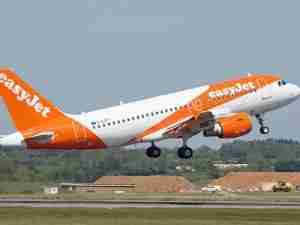Three Biggest China Airlines Face $1.3 Billion Currency Hit
By: | Aug 28 2016 at 10:56 PM | Air Cargo
China’s three biggest airlines are poised to report losses totaling 8.5 billion yuan ($1.3 billion) from currency swings this year as a weaker yuan proves a drag amid rising traffic and cheaper fuel. The silver lining: The losses are narrowing.
Flagship carrier Air China Ltd. may face 3 billion yuan in foreign-exchange losses, while China Southern Airlines Co., Asia’s biggest by passengers, is looking at a potential hit of 4 billion yuan and China Eastern Airlines Corp. may lose about 1.5 billion yuan, according to Taipei-based Capital Securities Corp. That compares with a combined loss of 16.2 billion yuan in 2015. The carriers are scheduled to announce their first-half earnings this week.
A strategy to trim dollar-denominated debt may be paying off as the airlines seek to shield their earnings from declines in the yuan, according to Capital Securities. A weaker local currency typically hurts companies that borrow in dollars to pay for imports such as aircraft. An unexpected devaluation of the yuan last year led to an 18-fold surge in currency losses in 2015 for the three carriers.
“The yuan’s devaluation raised foreign exchange loss and interest costs for the airliners,” said Castor Pang, head of research at Core-Pacific Yamaichi Hong Kong. “The yuan has stabilized after a tough second quarter and this will ease the burden on their bottomline. The second-half should be much better.”
The local currency depreciated 2.3 percent against the dollar in the six months through June, making it the worst performer in Asia. The yuan, trading at about 6.67 against the greenback, is likely to weaken about 2 percent more by the end of 2017, according to the average estimate of forecasts in a Bloomberg survey.
Shares of Air China and China Eastern have declined about 2 percent and 6 percent this year in Hong Kong, compared with a 13 percent slide in the Bloomberg Asia Pacific Airlines Index, according to data compiled by Bloomberg. Cathay Pacific Airways Ltd., the marquee Hong Kong-based airline that is facing competition from its mainland peers, has slumped 15 percent.
Jet fuel that cost about 30 percent less on average in the first half compared to a year earlier provided a buffer as the carriers enjoy the benefits of cheap oil helped by their policy not to hedge. They have added more routes in a market where passenger traffic is growing 12 percent annually, more than twice the pace of Europe and North America.
“Chinese carriers are in a better position in pricing than their rivals because they don’t hedge on fuel and their cost is lower,” said K. Ajith, an analyst at UOB Kay Hian Pte in Singapore. “On top of that, their international traffic is rising.”
Every 5 percent movement of the dollar translates to a loss or gain of about 3.4 billion yuan for China Eastern, and 2.8 billion yuan each for Air China and China Southern, he said.
*Goldman Sachs Inc., in a note last month, said it maintains a buy recommendation on China Eastern and neutral on both Air China and China Southern *China Southern scheduled to announce earnings on Aug. 29; Air China and China Eastern on Aug. 30 *Spring Airlines Co., the nation’s biggest budget carrier, set to report Aug. 30. Last week, the airline said it was planning to raise 4 billion yuan selling shares to select investors and use the proceeds to buy 10 A320 aircraft.










